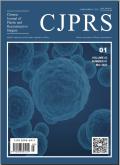肉毒杆菌毒素治疗雄激素性脱发:从机制的见解到临床应用
Chinese Journal of Plastic and Reconstructive Surgery
Pub Date : 2025-09-01
DOI:10.1016/j.cjprs.2025.08.006
引用次数: 0
摘要
背景:雄激素性脱发(AGA)是一种常见的脱发疾病,严重影响患者的生活质量。肉毒杆菌毒素(BoNT)已成为一种潜在的治疗方法;然而,其有效性和潜在机制尚不清楚。本系统综述旨在综合BoNT治疗AGA的现有证据,分析其机制,评估其疗效,并探讨其精确治疗的潜力。方法对2020 - 2025年间发表的研究进行PubMed检索。共纳入25项研究,包括11项临床试验和7项综述。这些研究分析了BoNT在AGA中的机制、治疗方案、疗效、结果、成本效益和安全性。结果BoNT可降低AGA的一个重要病理通路——真皮乳头细胞转化生长因子-β的表达。其他假设的机制,如头皮肌肉放松改善微循环或抑制雄激素转化需要进一步验证。在临床试验中,大多数研究通过肌肉注射(6项研究)或皮内注射(3项研究)使用30 - 150u的BoNT,进行1-3次疗程和长达6个月的随访。早期的开放标签试验报告有效率为70%-79%,但最近的高质量随机对照试验(rct)显示,与安慰剂相比,头发密度没有显著改善。非那雄胺或米诺地尔联合治疗可提高治疗效果,但缺乏大规模证据。BoNT的成本效益低于一线治疗,如米诺地尔,疗程费用大约高出37倍。肌内注射似乎比皮内注射更有效,可能是由于头皮肌肉松弛和血管减压。BoNT的安全性一般较低。目前,BoNT缺乏强有力的证据来取代AGA的传统治疗。未来的研究应侧重于建立标准化的给药方案,进行大规模、长期的随机对照试验,并整合分子生物标志物,以提高对BoNT在AGA管理中的临床应用的认识和优化。本文章由计算机程序翻译,如有差异,请以英文原文为准。
Botulinum toxin therapy for androgenetic alopecia: From mechanistic insights to clinical applications
Background
Androgenetic alopecia (AGA) is a common hair loss disorder that significantly affects patient’s quality of life. Botulinum toxin (BoNT) has emerged as a potential treatment; however, its effectiveness and underlying mechanisms remain unclear. This systematic review aimed to synthesize the existing evidence on BoNT for AGA, analyze its mechanisms, evaluate its efficacy, and explore its potential for precision therapy.
Methods
A PubMed search was conducted for studies published between 2020 and 2025. A total of 25 studies, including 11 clinical trials and 7 reviews, were included. The studies were analyzed for BoNT mechanisms in AGA, treatment regimens, efficacy, outcomes, cost-effectiveness, and safety profiles.
Results
Experimental evidence suggests that BoNT reduces transforming growth factor-β in dermal papilla cells, a key pathological pathway in AGA. Other hypothetical mechanisms, such as scalp muscle relaxation improving microcirculation or inhibiting androgen conversion require further validation. In clinical trials, most studies used 30–150 U of BoNT via intramuscular (six studies) or intradermal (three studies) injections, with 1–3 sessions and up to 6 months of follow-up. Early open-label trials reported response rates of 70%–79%, but recent high-quality randomized controlled trials (RCTs) showed no significant improvement in hair density compared to placebo. Combination therapy with finasteride or minoxidil enhanced treatment outcomes, though large-scale evidence is lacking. BoNT was less cost-effective than first-line therapies such as minoxidil, with session costs approximately 37 times higher. Intramuscular injection appeared more effective than intradermal injection, possibly due to scalp muscle relaxation and vascular decompression. BoNT generally had a mild safety profile.
Conclusion
Currently, BoNT lacks robust evidence to replace traditional treatments for AGA. Future research should focus on establishing standardized dosing protocols, conducting large-scale, long-term RCTs, and integrating molecular biomarkers to improve understanding and optimize the clinical use of BoNT in AGA management.
求助全文
通过发布文献求助,成功后即可免费获取论文全文。
去求助
来源期刊

Chinese Journal of Plastic and Reconstructive Surgery
Surgery, Otorhinolaryngology and Facial Plastic Surgery, Pathology and Medical Technology, Transplantation
CiteScore
0.40
自引率
0.00%
发文量
115
审稿时长
55 days
 求助内容:
求助内容: 应助结果提醒方式:
应助结果提醒方式:


